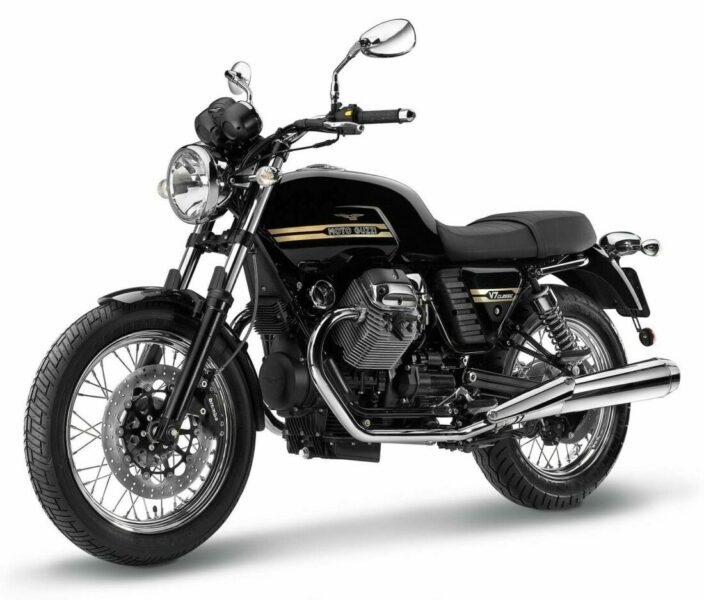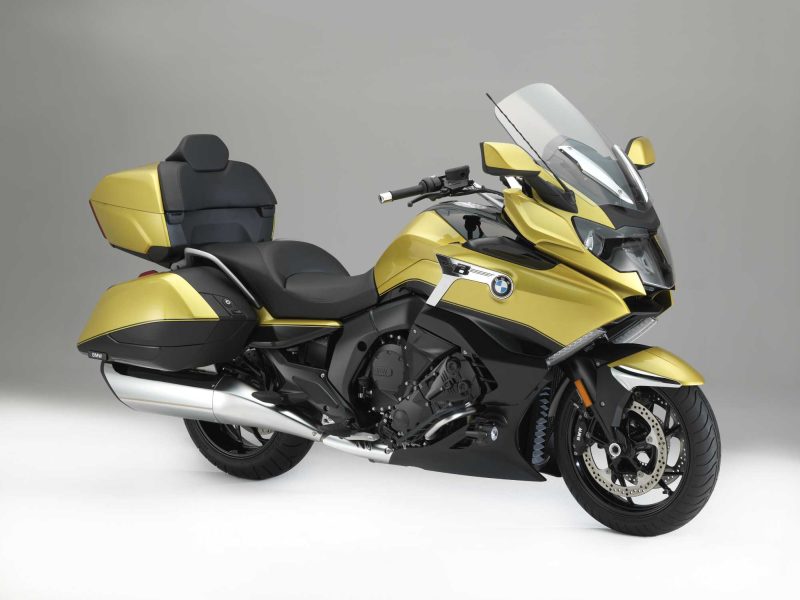
Moto Guzzi V7 Classic
- Video
But first, it has a name. A long time ago, it was written in 1969, the V7 Special was produced by a very successful and well-known motorcycle factory, and three years later a sports version.
The two-cylinder V-shaped unit had a volume of 748 cubic centimeters, of which 6.200 "horses" were brought out at 52 rpm, which should have been enough for a maximum speed of 200 km / h. At least that's what the Guzzi Museum boasts, but I have some concerns about the speed data, which the older riders think are fully justified.
But still it was a car that our grandfathers then only dreamed of. So - V7 has a name. And secondly: the motorcycle rides very well, although on paper and in three dimensions there is no technological redundancy. I would write that it goes great, but I would offend all R6 and CBR, to the characteristics of which we added such an adjective.
Are you finding it difficult to believe that a motorcycle that easily takes you to a meeting of old-timers and boasts how well you've done restoration work can perform well in the third millennium? Let's start with the generator.
The two cylinders wake up quieter than the 1.200 cc big brother when the start button is pressed, yet with sound and pleasant shaking, they unobtrusively declare that this is a Guzzi classic. The data on the rpm at which the engine reaches its maximum torque is very indicative, which is also confirmed in practice.
Imagine curved serpentines similar to those on our highest pass. The drivetrain can be in second or third gear, the analog dial only reads around 1.500 rpm, and the V7 pulls effortlessly into the next corner with a pleasant low frequency sound.
Pleasantly slow, just enough to make the ride enjoyable and not feel like it would damage the engine. Otherwise, it feels best in the range from three to five thousand rpm, but there is no point in pushing it beyond the six thousand, because in this part there is no noticeable increase in power and the roaring sound does not suit her at all. ... I failed to accelerate at maximum speed, but 140 kilometers per hour is quite decent, and that's quite enough.
The gear lever, with which we select one of the five gears, has an unsportsmanlike long movement, but requires very little effort on the left foot and gives good click feedback. In the middle rev range, it can move up very comfortably, that is, without any bumps or resistance, even without a clutch. The brakes, again, are good.
Both discs are sufficient for a safe stop, but we have messed up a bit on modern bikes, so we expect the jaws to react with a light touch of two fingers. But the Guzzi brakes will have to be pressed harder. It may be that you suddenly get fast with this bike, made possible by its relatively light weight and surprisingly light ride quality.
It leans well when cornering, but not too deep, and it also maintains a straight heading when driving in a straight line. The suspension is stiffer than I expected from the "old man", so on big bumps it is stronger than any spoiled rear.
But I will not be unfair and that you will not think that this is the same product as it was almost four decades ago.
Many metalworking parts are made of plastic. The fuel tank (made of Acerbis), both fenders, even the "chrome" headlight and mirrors, when hitting a fingernail, make the sound of plastic. This has saved a lot of kilograms, and therefore the bike, ready to ride, weighs less than two hundredths.
Of course, real shiny metal remains: exhaust pipes, valve covers, (too low) handles for passengers ... between daily and total mileage.
The Weber Marelli electronic injection unit and lambda probe are naturally Euro 3 compliant, and components such as brakes and suspension have been provided by renowned manufacturers.
If only we could see the amazement of the German motorcyclists who, like us, stopped at Bellagio in northern Italy, where we rode the new Classic. When I told them it was a new bike, they initially thought it was a communication error.
I got up from the bench by the lake and knocked on the fuel tank. “Tutausenteit, Major Friends! “After all these years, the concept is still working, and I believe that many owners will be more satisfied with it than anyone else, I will not say what, so that there will be no offense. I would get it. Because it is beautiful, good, and because not everyone has it.
Otherwise, he is not even destined to become a popular two-wheeled car! And briefly think about the price: I may be wrong, but it seems to me that it would be sold out immediately if the price was increased to several tens of thousands of euros, and the lot is limited to 100 copies. But they didn't, and so the V7 is a relatively affordable classic Guzzi.
Test car price: 7.999 EUR
engine: two-cylinder V, 744 cm? air-cooled, electronic fuel injection.
Maximum power: 35 kW (5 km) at 48 rpm
Maximum torque: 54 Nm @ 7 rpm
Power transmission: 5-speed transmission, cardan.
Frame: steel, double cage.
Suspension: in front of the classic Marzocchi telescopic fork? 40mm, 130mm travel, dual rear shock absorbers, 2-stage stiffness adjustment, 118mm travel.
brakes: front coil? 320mm, 4-piston Brembo caliper, rear disc? 260 mm, single piston cam.
Tires: before 110 / 90-18, back 130 / 80-17.
Wheelbase: 1.449 mm.
Seat height from ground: 805 mm.
the weight: 182 kg.
Fuel tank: 17 l.
Representative: Avto Triglav, Dunajska 122, Ljubljana, 01/5884550, www.motoguzzi.si.
We praise and reproach
+ classic design
+ friendly engine
+ gearbox and cardan gear
+ driving position
+ difference
- Don't expect too much and you will be satisfied
Matevž Hribar, photo :? Moto Guzzi
Basic data
Test model cost: € 7.999 XNUMX €
Technical information
engine: two-cylinder V-shaped, 744 cm³, air-cooled, electronic fuel injection.
Torque: 54,7 Nm @ 3.600 rpm
Energy transfer: Transmission 5-speed, cardan shaft.
Frame: steel, double cage.
brakes: front disc ø320 mm, 4-piston Brembo caliper, rear disc ø260 mm, single piston caliper.
Suspension: front classic Marzocchi telescopic fork ø40 mm, travel 130 mm, rear two shock absorbers, 2-stage stiffness adjustment, travel 118 mm.
Fuel tank: 17 l.
Wheelbase: 1.449 mm.
Weight: 182 kg.
We praise and reproach
difference
driving position
gearbox and cardan gear
friendly engine
classic design
don't expect too much, but you will be satisfied
